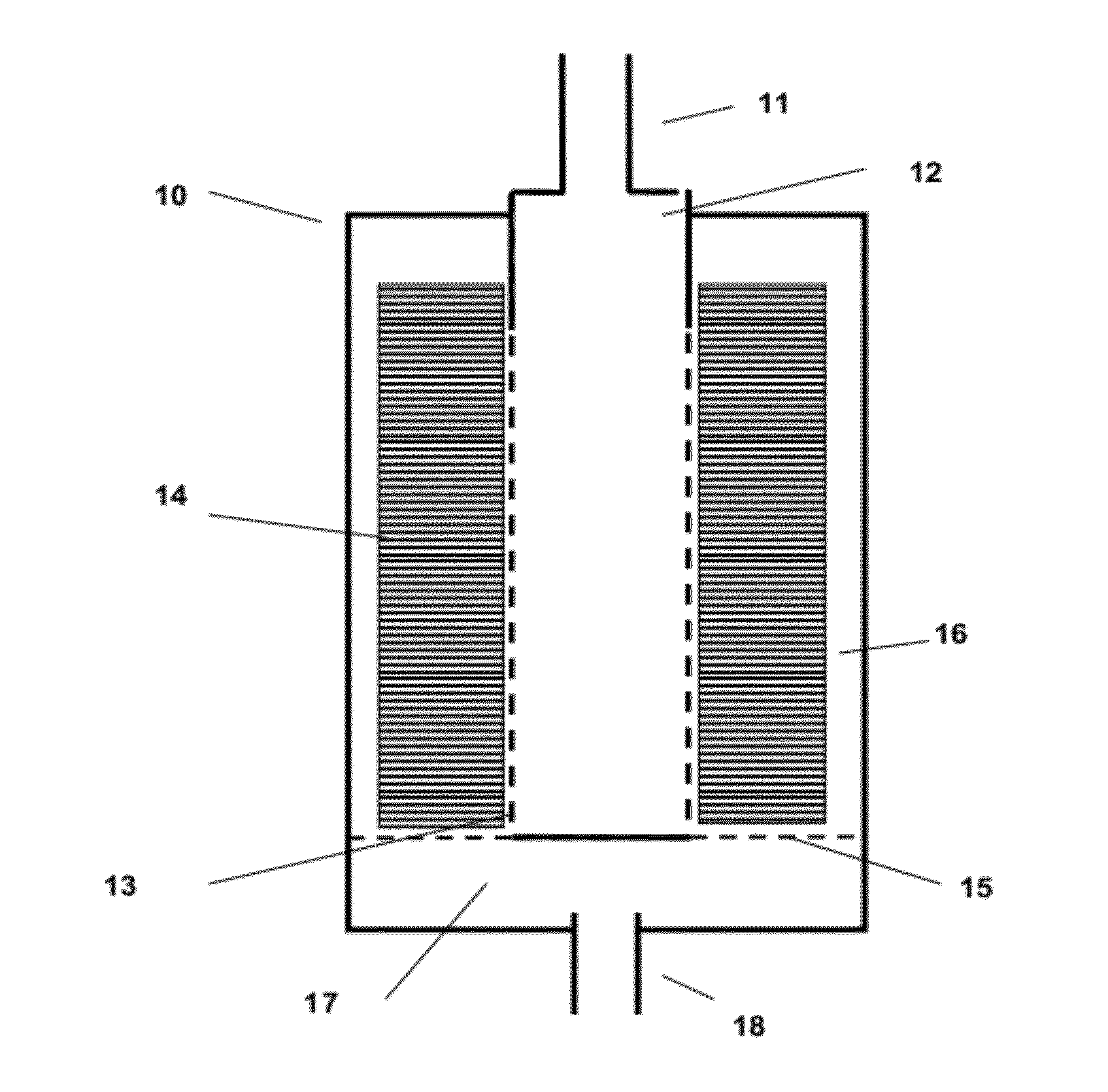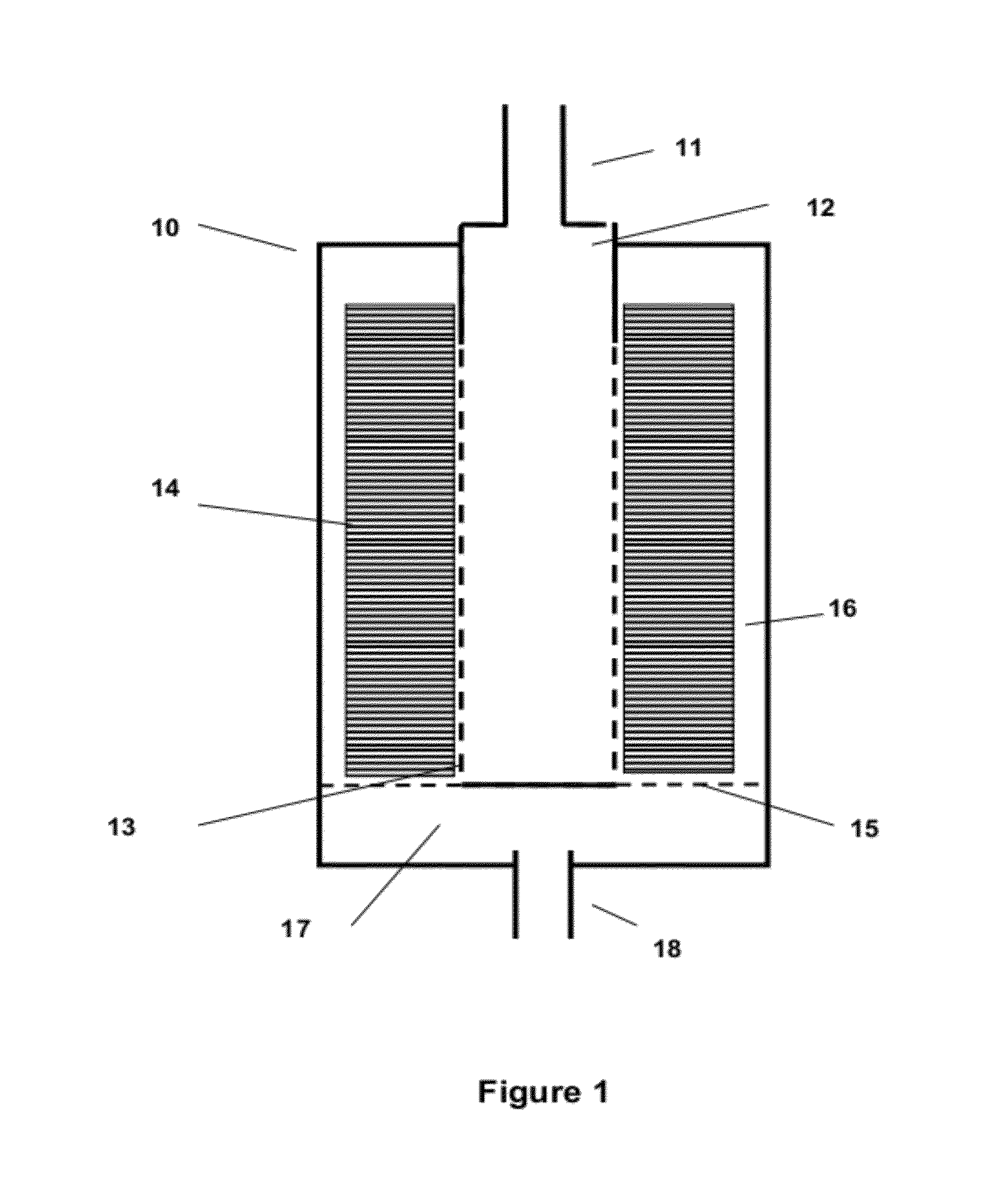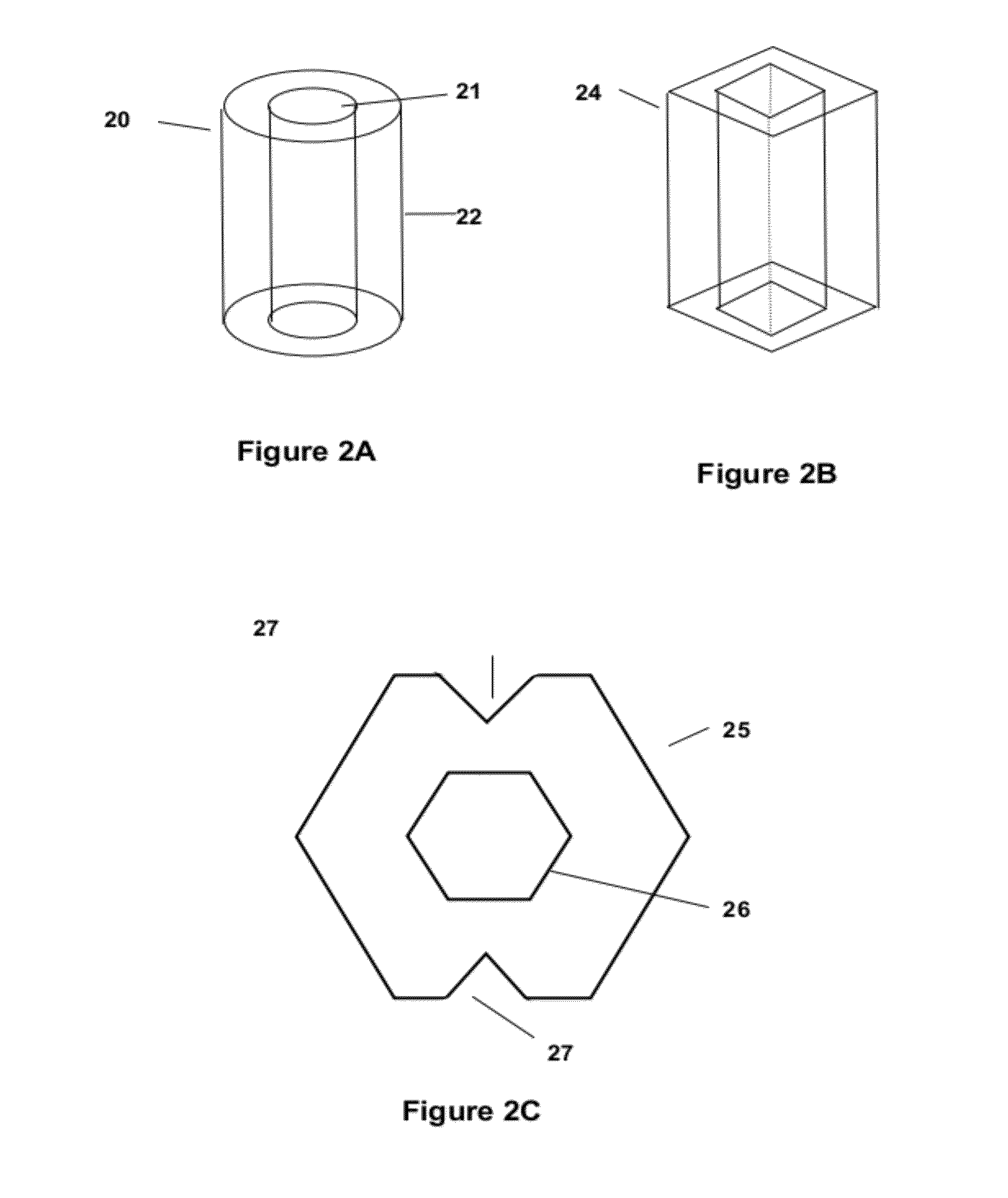Gas Purification Process Utilizing Engineered Small Particle Adsorbents
a technology of adsorbents and purification processes, applied in sulfur compounds, isotope separation, alkali metal oxides/hydroxides, etc., can solve the problems of difficult and expensive manufacturing, low steric separation rate, and low production efficiency, so as to reduce the level of the more rapidly diffused contaminant and the diffusion rate is increased
- Summary
- Abstract
- Description
- Claims
- Application Information
AI Technical Summary
Benefits of technology
Problems solved by technology
Method used
Image
Examples
embodiment 1
[0079]A structured adsorbent particle comprising a thin film adsorbent coating on the exterior of a low permeability core (e.g., a substantially non-permeable, solid core), wherein a minimum cross-sectional dimension of the particle is less than 1 centimeter and greater than 100 microns.
embodiment 2
[0080]A structured adsorbent particle according to embodiment 1, wherein the adsorbent coating has a thickness less than 1000 microns and greater than 1 micron, said thickness representing an average thickness whose uniformity is optionally such that a thickness standard deviation is less than about 40% of the average thickness.
embodiment 3
[0081]A structured adsorbent particle according to any one of the preceding embodiments, wherein the adsorbent coating comprises a microporous material (e.g., selected from zeolites, such as selected from DDR, CHA, MFI, Beta, FAU, and combinations and intergrowths thereof; MOFs (metal organic frameworks); AlPOs; SAPOs; ZIFs (zeolitic imidazolate frameworks); and carbons), comprises a mixed matrix material (e.g., a polymer film comprising a polymer selected from silicone rubber and polyimides, and further comprising particles of zeolite, such as selected from DDR, CHA, MFI, Beta, FAU, and combinations and intergrowths thereof), and / or is comprised of an intergrown film of adsorbent crystals (e.g., comprised of a zeolite selected from DDR, MFI, CHA, and combinations and intergrowths thereof) grown directly on the exterior surface of the low permeability core.
PUM
| Property | Measurement | Unit |
|---|---|---|
| thickness | aaaaa | aaaaa |
| thickness | aaaaa | aaaaa |
| thickness | aaaaa | aaaaa |
Abstract
Description
Claims
Application Information
 Login to View More
Login to View More - R&D
- Intellectual Property
- Life Sciences
- Materials
- Tech Scout
- Unparalleled Data Quality
- Higher Quality Content
- 60% Fewer Hallucinations
Browse by: Latest US Patents, China's latest patents, Technical Efficacy Thesaurus, Application Domain, Technology Topic, Popular Technical Reports.
© 2025 PatSnap. All rights reserved.Legal|Privacy policy|Modern Slavery Act Transparency Statement|Sitemap|About US| Contact US: help@patsnap.com



